National Costumes of Beauty Queens: The Elegance of Natural Materials
National costumes of beauty queens amaze us with their elegance! These costumes represent the cultural heritage of Vietnam. From the intricate craftsmanship to the choice of natural materials, everything screams luxury. Forget about polyester and nylon, we’re talking about silk, seagrass, bamboo and rattan! These materials not only look fabulous but also feel amazing on the models. Now, get ready to immerse yourself in the world of national costumes and discover the beauty of natural materials.
Introduction
Beauty pageants have become a global fascination, with millions of people tuning in to watch contestants from all over the world battle it out for the coveted title of Miss Universe, Miss World, or whatever “Miss” they’re vying for. It’s a world where poise, intelligence, and yes, beauty, reign supreme. But there’s another crucial aspect that often gets overlooked – the national costume.
National costumes can be defined as traditional garments that are representative of a specific country or region. They are not just ordinary outfits; rather, they are a powerful means of showcasing a country’s culture and heritage. These costumes are often adorned with intricate designs, vibrant colors, and unique patterns that reflect the traditions, history, and values of a nation.
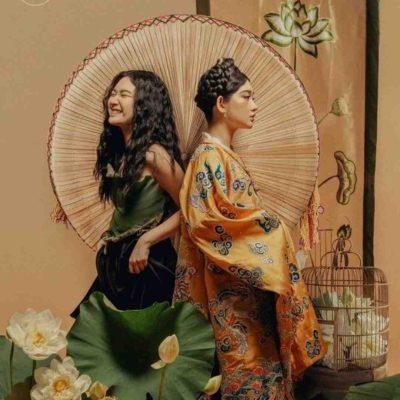
Beyond their aesthetic appeal, national costumes have deep historical roots. They serve as a window into a country’s past, providing a glimpse into the customs and traditions that have shaped its identity over time. These costumes serve as a reminder of the struggles, triumphs, and cultural exchanges that occurred throughout centuries.
Materials used in national costumes play a significant role in their overall look and feel. Craftsmen carefully choose fabrics that reflect the essence of their culture. Vibrant silk, intricate embroidery, and handwoven textiles are just a few examples of the materials that add elegance to these costumes. The selection of materials often reflects the geographical and climatic conditions of a region. For instance, costumes from colder regions might incorporate warm and cozy wool, while those from tropical areas may feature lightweight and breathable fabrics like cotton or linen.
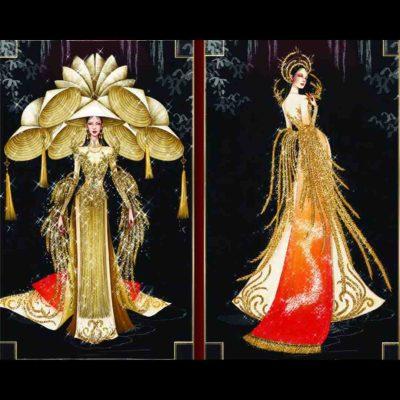
But it’s not just about the materials; it’s also the craftsmanship and traditional techniques that bring national costumes to life. Skilled artisans invest hours, if not days, in creating breathtaking nationl costume.
Regional Influences
Let’s talk about colors, patterns, and symbolism. National costumes are like a visual feast for the eyes. They incorporate local color palettes, patterns, and symbols that have special meanings and significance. Each country has its own unique set of colors, patterns, and symbols that make their national costumes stand out from the rest.
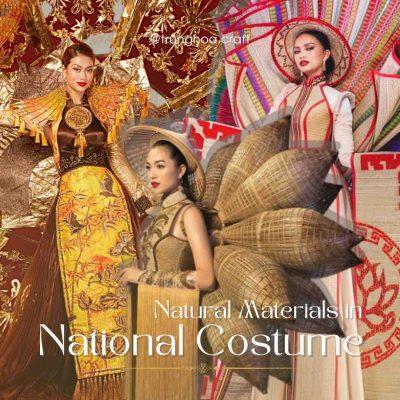
A Showcase of Natural Materials
First up, we have silk – the ultimate symbol of opulence. Imagine a beauty queen draped in a flowing silk gown, shimmering under the spotlight. This smooth and delicate fabric adds a touch of sophistication, making heads turn wherever it goes.
Iridescent silk with the image of bamboo, a symbol of Vietnamese countryside, was delicately shown on the “Trúc Chỉ” costume of Miss Grand Vietnam 2022 – Thiên Ân.
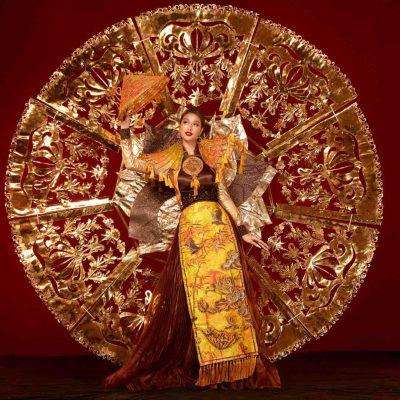

The harmonious combination of traditional materials and modern art knowledge has helped the Truc Chi art form become popular thanks to its proximity to folklore, meticulous processing, and creativity but also very noble. Artwork with the concept of using images of bamboo – a symbol of the indomitable will of the Vietnamese people.
Now, let’s cool up with seagrass. Picture a beauty queen clad in a seagrass ensemble, named “Chiếu Cà Mau”, exuding elegance and comfort. Vibrant colors and delicate knitting details make Ngoc Chau so vibrant in the national costume.
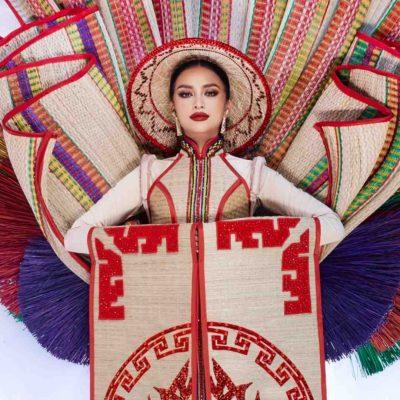
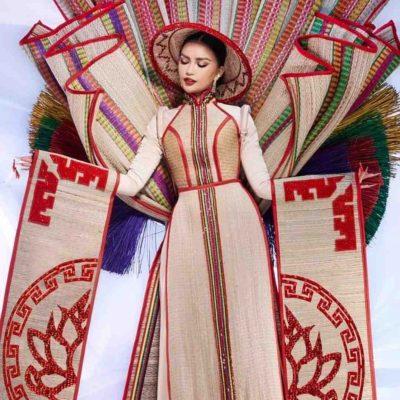
Last but not least, bamboo and rattan. The lightweight and breathable nature of them makes it the ideal choice for a chic and breezy style statement.
At the 2016 Miss Universe, Lệ Hằng won kudos in the national costume competion with an outfit made of rattan and bamboo, a traditional conical hat and images of lotus flowers, symbolic of Vietnam.
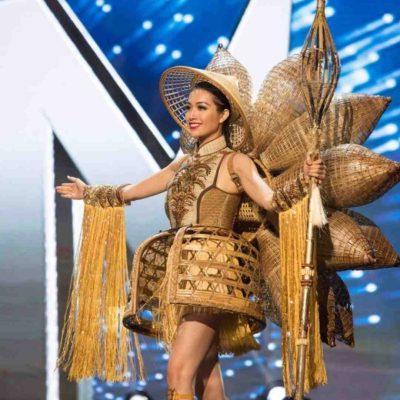
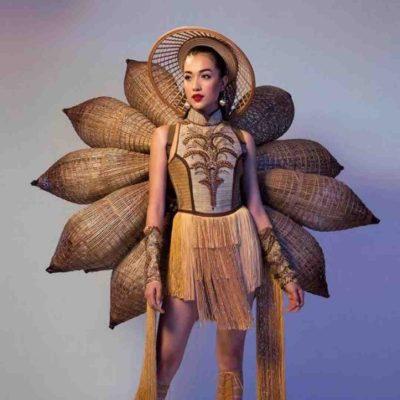
These materials, from silk to rattan, work together to create breathtaking costumes that captivate audiences worldwide. The craftsmanship and traditional techniques involved in their creation add an extra layer of artistry and cultural significance.
Conclusion
We delved into the enchanting world of natural materials used in national costumes. From the luxurious silk to the versatile bamboo and rattan, each material has its own charm. Whether it’s the cozy warmth of silk or the classic coolness of linen, these materials add a touch of elegance and authenticity to the costumes.


